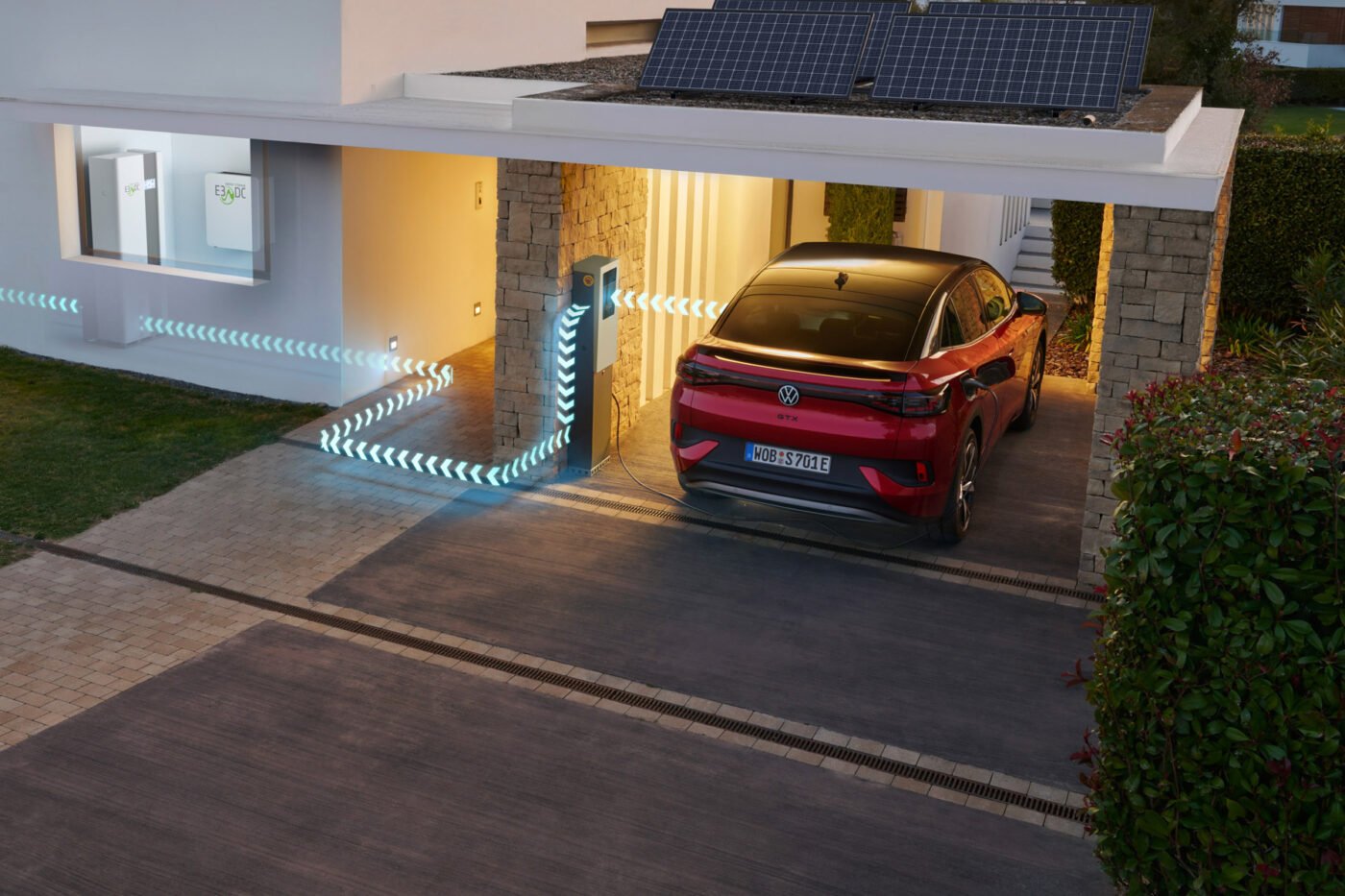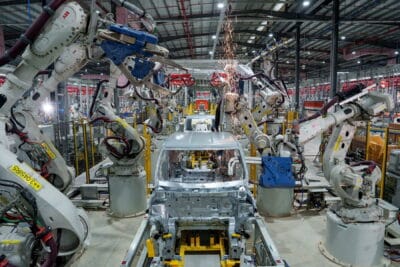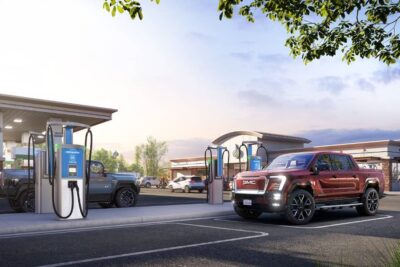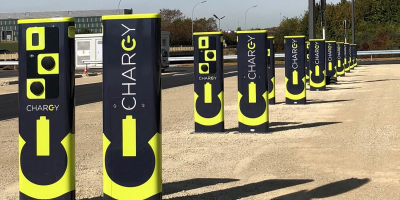
When and how will vehicle-to-grid become a reality? 6 questions for Jan Figgener
The advantages of bidirectional charging are apparent. At home, electricity from an electric car battery can be used to power electrical appliances – not only in the event of a power cut but also in the evening, for example, after the electric car has been charged with solar power from your home solar power system during the day. If you don’t use the electricity yourself but feed it into the grid, it stabilises the latter, reducing the costs for the necessary grid expansion and generating passive income.
What was already announced as a dream scenario with the first electric cars is now becoming a reality. It is a step the automotive industry cannot take alone – power companies and grid operators are also instrumental in the development and implementation.
On 10 and 11 April, the Vehicle-to-grid, Vehicle-to-home and Smart Charging conference will take place in Münster in cooperation with Haus der Technik – with presentations, discussions and professional exchanges on the sidelines. We spoke to Jan Figgener, one of the conference organisers.
Many pilot projects have already proven the technical feasibility of vehicle-to-grid and bidirectional charging in general – so it works. However, the breakthrough in series production vehicles has yet to come. Is there a need for more legal framework? Or has the automotive industry not yet focused on V2G because they had other priorities for their first electric cars?
Indeed, the market launch took a little longer than many would have liked. Nevertheless, the first offers from car manufacturers and aggregators have been available since this year, and many other solutions and collaborations have been announced for the near future. The step into series production is, therefore, happening right now. On the one hand, some technical challenges had and still have to be solved because mobility and energy are still too often thought of separately. However, the first solutions in this respect are already promising, and many innovative companies are developing them further.
On the other hand, we see several different problems at the regulatory level. For example, differing registration processes and various technical requirements of grid operators make it difficult to scale the technology. There is also still a difference in levies and charges between a home storage system and a bidirectional car, which has a major impact on some business models. However, we are optimistic about the future because manufacturers, politicians and grid operators are actively working on solutions.
Is vehicle-to-grid moving towards AC solutions in which the car feeds alternating current back into the grid? DC solutions could be more suitable for vehicle-to-home, to integrate the electric car battery into one’s own microgrid with a photovoltaic system and home storage.
While a few years ago, a lot of solutions were still based on DC, we are now seeing more and more AC solutions. AC is the obvious solution, especially for smart charging, and the step towards bidirectional charging is an obvious one.
I would also assess the question of AC vs DC independently of the application. Two things are essential for vehicle-to-home: the vehicles must have very low standby consumption and, at the same time, discharge efficiently at lower power. If I have several hundred watts of power loss in some of today’s vehicles, I cannot sensibly supply a household that also consumes a few hundred watts. We therefore need cars with very low standby losses of just a few watts and new inverters. Whether these inverters are in the car or the charging station and whether we are talking about AC or DC charging is ultimately irrelevant.
What effects does bidirectional charging have on the battery, regardless of whether it is fed into the grid or your own home? Does it age faster due to the additional charging cycles? Or what are the challenges for the battery cell and battery management?
The loads vary depending on the application, but the all-clear can generally be given. Batteries age chronologically (even without operation) and cyclically (active charging and discharging). High states of charge and temperatures lead to accelerated calendar ageing, while high charging currents and high cycle depths lead to accelerated cyclical ageing.
The following happens with bidirectional integration: In most applications, the average state of charge decreases compared to the usual full charge after arrival, extending the calendar service life. At the same time, cyclical ageing increases due to the additional energy throughput. However, this ageing only has a minor impact on the service life because most cycle depths are minimal, and the vehicles are generally designed for significantly more cycles than are required for mobility. We mainly see such small cycle depths when supplying the household with energy and frequency stabilisation.
The situation can be different when supplying a high-consumption commercial operation or in electricity market trading, where the revenue comes from the energy throughput. Such applications can lead to many additional cycles with high cycle depths, during which accelerated ageing can occur. Here, we need operating strategies to prevent premature ageing of the battery, but this is possible with modern analytics and good energy management systems. In many cases, the vehicle’s power electronics must also remain switched on. That leads to several thousand operating hours per year, which can be challenging for today’s models but is not a general obstacle to future bidirectional vehicle integration.
And what about network operators and charging infrastructure operators? What hurdles do they have to take?
In Germany, we have network operators of very different sizes. Smaller operators, in particular, quickly reach their limits in terms of personnel with all the changes in the energy world. After all, storage systems, solar energy systems, heat pumps and even electric cars are added to the mix. We need standardised processes so that all players have a uniform interface. The role of service providers will thus continue to grow, especially for smaller grid operators. We are actually very optimistic about charging infrastructure operators, as many companies have been working on this topic for a long time. However, the focus will initially be on the private sector, as regulation is even more challenging in the public sector.
Refuelling was easy for the customer. Charging at their own wallbox is, too, as long as the electricity only flows from the grid into the battery. How can vehicle-to-grid be made as simple as possible for the customer? And what is needed in the background – in terms of system integration?
To help vehicle-to-grid become mainstream, everything has to be as simple as possible. The vehicle or charging station must decide for itself when to charge and discharge, taking into account the mobility needs of the owner.
Technology enthusiasts may look at a daily price curve and optimise their behaviour accordingly. Still, the real goal is for users not even to notice that their vehicle is charging and discharging intelligently. The difference is then particularly noticeable in the wallet, as the additional vehicle usage generates revenue that can amount to several hundred euros per year. Nowadays, this requires a control logic and a corresponding electricity contract.
Representatives from the German National Charging Infrastructure Control Centre, numerous hardware and software providers, and the research sector will speak at the conference. What do you expect from the conference? What will be the most important topics – on stage and in the discussions around it?
The conference is always characterised by a very open exchange, where solutions and challenges are presented. The focus is currently very clearly on companies that are leaders in the field and are now presenting the first large-scale market solutions in addition to many pilot projects. It increases the players’ understanding of each other’s problems and allows them to work together on a solution. But critical discussions are also the order of the day. Last time, for example, we discussed the complexity of the entire communication chain, estimates of revenue potential, the competition between AC vs. DC and, of course, regulatory obstacles. We are excited to see what other topics will be added this year. The event also allows participants to informally exchange ideas with stakeholders and develop ideas together. The scheduled discussion slots, as well as the breaks and, of course, the well-attended evening event, are ideal for this.
Mr Figgener, thank you for the interview!
The interview is part of the media partnership between electrive and the Vehicle-2-Grid Conference on 11 & 12 April in Münster.





0 Comments